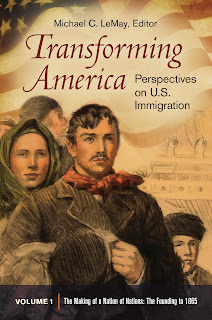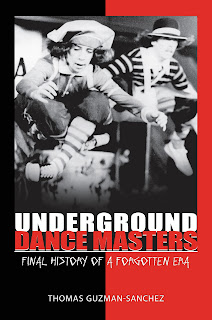What prompted you to write Transforming America: Perspectives on U.S. Immigration? What "message" do you want to communicate?
I have previously authored eight books on the subject which I have been researching and writing about since 1980. In part I was prompted by a request from ABC-CLIO to consider doing a series of books. I was especially intrigued by the approach of many authors with different academic affiliations and disciplinary perspectives, and the opportunity to engage not only well-established scholars, but also to mentor and encourage younger scholars just beginning their publishing careers. I think the most important message for readers of this set of three books is that immigration is a very complex process, and immigration policy is a thorny and at times difficult policy arena within which to enact legislation to cope with it. I think, also, readers will begin to appreciate how and why it is challenging to “get it right” in enacting immigration laws, which inevitably have unforeseen and unanticipated consequences.
What was the highlight of your research? In the course of your research, what discovery surprised you the most? What surprises readers/others the most about your research?
I think for most readers, and to a great extent even for me, the most surprising aspect of my research relates to how intractable immigration policy remains to be; and how decade after decade, immigrant group after immigrant group, the issues and controversies tend to be the same despite many changes in the law dealing with the issues.
How did your research change your outlook on immigration?
I think the greatest lesson from my research pertaining to my own outlook on immigration is that as a scholar I must be extraordinarily careful not to fall into the trap of thinking I know what is best for policy and thereby to become a policy advocate; to prescribe policy options rather than to describe and analyze them. This realization as to the complexity of the issue that emerges from these volumes, and from my research, is a humbling experience. Even a long-time “student” of the subject learns something new every time one studies it, and learns to appreciate the fact that even a scholar who is relatively an “expert” on the issue does not have all the answers.
How have people reacted to your book and/or the ideas you set forth? Is it what you hoped for, or is there more work to be done?
I have not yet had reaction to this latest series of books. In the past, with regard to other books on the subject I have authored, I am gratified that they have been well received by other scholars and academicians, and that students have reacted to me by expressing how interesting the books have been—how engaging the topic is to them. Many have expressed sentiment to the effect that after reading one of my books on the topic, they appreciate how the “bumper sticker” or “sound bite solutions” to the problem so often offered by politicians, will simply not work. The issue is too complex to be resolved by any approach or idea that can fit on a bumper sticker!
What's next for you?
I hope to polish and revise a manuscript dealing with immigration policy and the rise of public health in the United States. My next research and writing project will be to explore other policy areas to which immigration policy is so inextricably related. I would like to expand to book length a few of the topics I covered in a relatively brief essay in this three-volume set. I would like to do a book-length treatment of immigration and industrialization. I would like to do a book relating the experiences of “exceptional immigrants” whose contributions have made “American exceptionalism.” I would also like to co-author, with a particular industry expert or insider, the relationship between specific immigrant persons and groups and the development of their industry: for example, the wine industry, the brewery industry, the timber industry, the canning industry, and so on.
Michael LeMay is Professor Emeritus from California State University-San Bernardino, having retired as a full professor, former chair of his department, as Assistant Dean. He has previously sole-authored numerous books, for example: The Perennial Struggle, 3e. Upper-Saddle River, N.J.: Prentice-Hall, 2009; Illegal Immigration. Santa Barbara, CA: ABC-CLIO, 2007; Guarding the Gates: Immigration and National Security. Westport, CT.: Praeger Security International, 2006.







.bmp)









